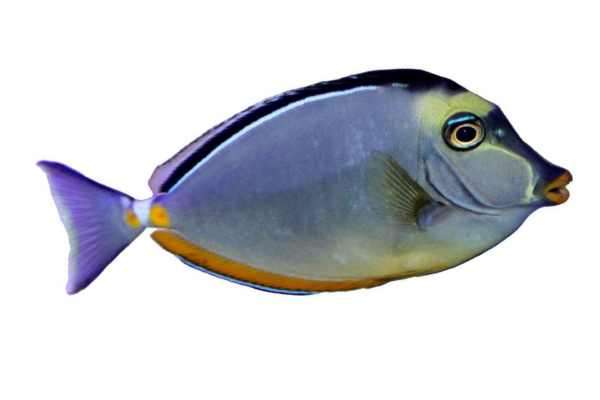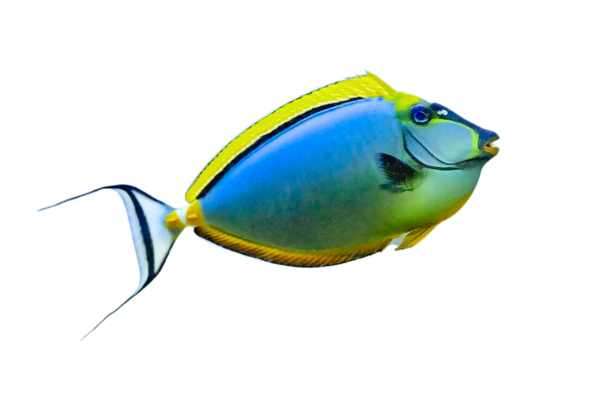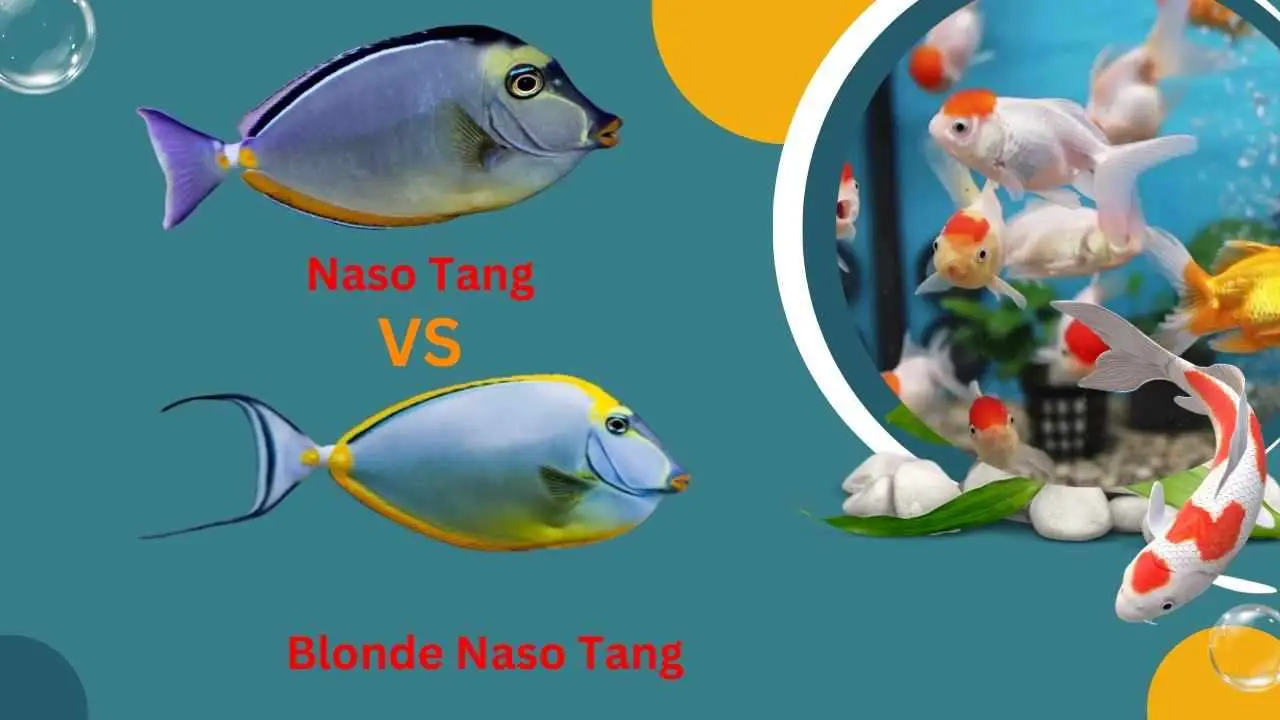In the world of saltwater aquariums, two captivating species stand out: the Naso Tang (Naso lituratus) and the Blonde Naso Tang (Naso elegans). These fish have become popular choices among enthusiasts due to their stunning appearances and intriguing behaviors. In this blog post, we will delve into the world of these beautiful creatures, exploring their physical characteristics, natural habitats, tank requirements, feeding habits, behavior, health concerns, breeding tendencies, and availability in the aquarium trade. By the end, you’ll have a comprehensive understanding of the differences between Naso Tang and Blonde Naso Tang, empowering you to make informed decisions when considering them for your own aquatic haven.
Overview Comparison: Naso Tang Vs Blonde Naso Tang
Here’s a table comparing various aspects of Naso Tang and Blonde Naso Tang:
| Aspect | Naso Tang | Blonde Naso Tang |
|---|---|---|
| Body Shape and Size | Elongated and up to 16 inches in length | Elongated, slightly smaller, reaching around 12 inches |
| Coloration and Patterns | Vibrant blues, greens, yellows, and oranges | Lighter color palette, golden or yellowish body with white and silver accents |
| Physical Attributes | Prominent snout, sharp spines near the tail, and graceful caudal fin | Protruding snout and a gracefully trailing caudal fin |
| Native Regions | Indo-Pacific region, including the Red Sea, the Maldives, and the Great Barrier Reef | Indo-Pacific region |
| Preferred Environments | Lagoons, outer reef slopes, and reef flats | Channels and outer reef slopes |
| Geographic Distribution | Wide range across various tropical waters | Varies, influenced by factors such as temperature, currents, and food sources |
| Ideal Tank Size | Minimum 100-gallon tank | Minimum 100-gallon tank |
| Water Parameters | Temperature: 72-80°F (22-27°C) | Temperature: 72-80°F (22-27°C) |
| Lighting | Moderate to high lighting conditions | Moderate to high lighting conditions |
| Tank Mates | Peaceful species such as other tangs and wrasses | Peaceful species, compatibility may vary |
| Potential Aggression | May exhibit aggression towards similar species | Occasional territorial disputes may occur |
| Tank Setup | Hiding spots, open swimming areas, suitable substrate, and live rock arrangements | Hiding spots, open swimming areas, suitable substrate, and live rock arrangements |
| Dietary Needs | Herbivorous, require marine algae and seaweed | Herbivorous, specific preference for different types of marine algae |
| Feeding Strategies | High-quality marine algae sheets or pellets, supplemented with fresh vegetables | Algae-based foods such as pellets or flakes, experiment with various algae types |
| Typical Behavior | Social tendencies, group dynamics, mating and spawning behaviors | Peaceful and sociable, unique social behavior, distinctive breeding habits |
| Common Health Issues | Marine ich, lateral line erosion (HLLE), bacterial infections | Similar health concerns to Naso Tang |
| Breeding Characteristics | External fertilization, eggs left to float freely | External fertilization, eggs left unattended |
| Availability in Trade | Commonly available in the aquarium trade | Relatively less common, sought after for their unique coloration |
| Price Range | $50 to $150 (depending on size and coloration) | $100 to $300 or more (depending on size and availability) |
Appearance and Identification
Physical Characteristics of Naso Tang
The Naso Tang (Naso lituratus) boasts a sleek and elongated body shape, exhibiting elegance and grace in its movements. Growing up to 16 inches in length, these fish command attention with their substantial size. Their color patterns and variations are truly a sight to behold, ranging from vibrant blues and greens to eye-catching yellows and oranges. Some specimens even feature intricate patterns and markings that add a touch of uniqueness to their appearance. Additionally, Naso Tang possesses remarkable physical attributes, such as a prominent snout, sharp spines near their tail, and a graceful, ribbon-like caudal fin.

Image Showing Naso Tang
Physical Characteristics of Blonde Naso Tang
The Blonde Naso Tang (Naso elegans), although closely related to its Naso Tang counterpart, exhibits some notable differences in body shape and size. While they share the same elongated physique, Blonde Naso Tang tends to be slightly smaller, typically reaching lengths of around 12 inches. What sets them apart is their distinctive coloration and patterns. As their name suggests, they possess a lighter color palette, featuring a golden or yellowish body with subtle accents of white and silver. These subtle yet captivating colors make them a prized addition to any saltwater aquarium. Notably, Blonde Naso Tang also showcases physical attributes similar to Naso Tang, including a protruding snout and a gracefully trailing caudal fin.

Image Showing Blonde Naso Tang
Natural Habitat and Distribution
Native Regions of Naso Tang
Naso Tangs are native to the tropical waters of the Indo-Pacific region, including the Red Sea, the Maldives, and the Great Barrier Reef. They thrive in reef environments characterized by clear waters, abundant coral formations, and a rich diversity of marine life. These fish are often found in lagoons, outer reef slopes, and reef flats, where they can explore and graze on algae-covered rocks and coral structures. The geographic distribution of Naso Tang spans a vast area, making them a fascinating species to observe in their natural habitats.
Natural Habitat of Blonde Naso Tang
Blonde Naso Tang, like its counterpart, is also found in the Indo-Pacific region. However, their natural habitat preferences and geographic distribution may differ slightly. While they share a preference for reef environments, Blonde Naso Tang tends to inhabit deeper areas of the reef, often dwelling in channels and outer reef slopes. Their range limitations are influenced by factors such as water temperature, currents, and availability of suitable food sources. It is important to understand their specific habitat requirements when considering these stunning fish for your aquarium.
Tank Requirements and Compatibility
Ideal Tank Size for Naso Tang
Providing an adequately sized tank is crucial for the well-being of Naso Tang. Due to their large size and active nature, a tank with a minimum capacity of 100 gallons is recommended. This allows them ample space to swim and explore, mimicking their natural habitat.
Recommended Tank Conditions
Creating optimal tank conditions is essential for the health and happiness of both Naso Tang and Blonde Naso Tang. Maintaining stable water parameters and high water quality is of utmost importance. Aim for a temperature range of 72-80°F (22-27°C) and a specific gravity of 1.023-1.025. Additionally, these fish thrive under moderate to high lighting conditions, as it simulates the intensity of natural sunlight.
Tank Compatibility Considerations
When introducing Naso Tang or Blonde Naso Tang to your aquarium, it’s crucial to consider their compatibility with other tank mates. These fish generally coexist well with peaceful species, such as other tangs, wrasses, and certain reef-safe fish. However, caution should be exercised when housing them with more aggressive or territorial species, as conflicts may arise. Properly researching the temperament and behavior of potential tank mates is essential to maintaining a harmonious aquatic community.
Tank Setup and Decor
To ensure the well-being of Naso Tang and Blonde Naso Tang, it is important to provide a well-thought-out tank setup. Incorporating ample hiding spots and open swimming areas allows them to exhibit their natural behaviors. Utilize live rock arrangements to create caves, crevices, and ledges where these fish can retreat and explore. Additionally, a suitable substrate, such as fine sand or crushed coral, will mimic their natural environment and facilitate their foraging activities.
Feeding Habits and Nutrition
Dietary Needs of Naso Tang
As herbivorous creatures, Naso Tang relies heavily on a diet rich in marine algae and seaweed. Providing a varied and balanced diet is essential for their health and vitality. Offer them high-quality marine algae sheets or pellets specifically formulated for herbivorous fish. Supplementing their diet with fresh vegetables, such as blanched spinach or nori, will further enhance their nutritional intake. Regular feeding sessions throughout the day ensure that they receive sufficient nourishment.
Feeding Habits of Blonde Naso Tang
Blonde Naso Tang also possesses herbivorous tendencies, although their dietary preferences may vary slightly from those of Naso Tang. These fish often exhibit a particular fondness for different types of marine algae. Introducing a mix of high-quality algae-based foods, such as pellets or flakes, will satisfy their nutritional requirements. Experimenting with various types of algae and observing their feeding preferences will help you tailor their diet to suit their needs.
Behavior and Temperament
Typical Behavior of Naso Tang
Naso Tang is known for its social tendencies and group dynamics. In their natural habitats, they often form loose groups or schools, swimming together in search of food and suitable mates. Within the group, a hierarchy is established, with dominant individuals asserting their authority. Additionally, during mating and spawning seasons, Naso Tang engages in captivating courtship behaviors, such as color displays and intricate dances.
Behavior Patterns of Blonde Naso Tang
Blonde Naso Tang also exhibits fascinating behavior patterns, albeit with some distinctive characteristics. They are generally peaceful and sociable, often swimming in harmony with other fish in the aquarium. However, it’s important to note that individual temperaments can vary, and occasional territorial disputes may occur. When it comes to breeding, Blonde Naso Tang showcases unique reproductive behaviors, including courtship rituals and elaborate spawning habits.
Health and Disease
Common Health Issues in Naso Tang
Like any living creature, Naso Tang is susceptible to certain health issues. Understanding common diseases that can affect them is crucial for early detection and prompt treatment. Some prevalent ailments among Naso Tang include marine ich (white spot disease), lateral line erosion (HLLE), and various bacterial infections. Regular observation and vigilance, along with proper tank maintenance and a nutritious diet, can help prevent and mitigate these health concerns.
Health Concerns Specific to Blonde Naso Tang
While Blonde Naso Tang shares some vulnerabilities with Naso Tang, they mayalso have their specific health concerns to be aware of. These may include similar diseases such as marine ich or bacterial infections. Additionally, Blonde Naso Tang may be more prone to color fading or stress-related issues due to their unique coloration. It is important to provide them with a stress-free environment, optimal tank conditions, and a balanced diet to maintain their health and vibrant appearance.
Breeding and Reproduction
Reproductive Biology of Naso Tang
Naso Tangs exhibit fascinating reproductive behaviors in their natural habitats. During courtship, males often display vibrant colors and intricate patterns to attract females. Once a pair is formed, they engage in an elaborate dance, swimming together and releasing eggs and sperm into the water column. The eggs are then left to float freely, and the parents do not provide any further care. In aquarium settings, reproducing Naso Tang can be challenging due to the specific conditions required for successful spawning.
Breeding Behavior of Blonde Naso Tang
Similar to Naso Tang, Blonde Naso Tang also showcases unique characteristics in their breeding cycle. Courtship rituals involve color displays and intricate movements, as males try to attract females. After successful courtship, the pair engages in spawning, where the female releases eggs and the male fertilizes them externally. The eggs are typically left unattended, and the fry hatch within a few days. Breeding Blonde Naso Tang in captivity requires careful planning, precise water conditions, and dedication to creating an ideal environment for successful reproduction.
Availability and Price Range
Availability of Naso Tang in the Aquarium Trade
Naso Tang is a popular choice among saltwater aquarium enthusiasts, and as a result, they are commonly available in the aquarium trade. Many reputable suppliers and fish stores offer Naso Tang as part of their inventory. It is essential to source these fish from trusted and ethical suppliers to ensure their health and well-being.
Price Range of Naso Tang
The price of Naso Tang can vary depending on factors such as size, coloration, and rarity. On average, they can range from $50 to $150, with larger and more vibrant specimens commanding higher prices. It’s important to consider the cost of acquiring and maintaining Naso Tang when planning your aquarium budget.
Availability and Price Range of Blonde Naso Tang
Blonde Naso Tang may be less commonly available compared to Naso Tang due to their unique coloration. Their striking appearance and relative rarity can make them more sought after by aquarium enthusiasts. As a result, the price of Blonde Naso Tang may be higher, typically ranging from $100 to $300 or more, depending on their size and availability.
Concluding Remarks
In conclusion, Naso Tang and Blonde Naso Tang are two captivating species that bring beauty and charm to saltwater aquariums. Their physical characteristics, natural habitats, tank requirements, feeding habits, behavior, health concerns, breeding tendencies, and availability in the aquarium trade have been explored in this article. Understanding the differences between these species empowers enthusiasts to make informed decisions when selecting the perfect addition to their underwater haven. Remember to further research and consult with experts to ensure the well-being of these magnificent creatures in your care.

